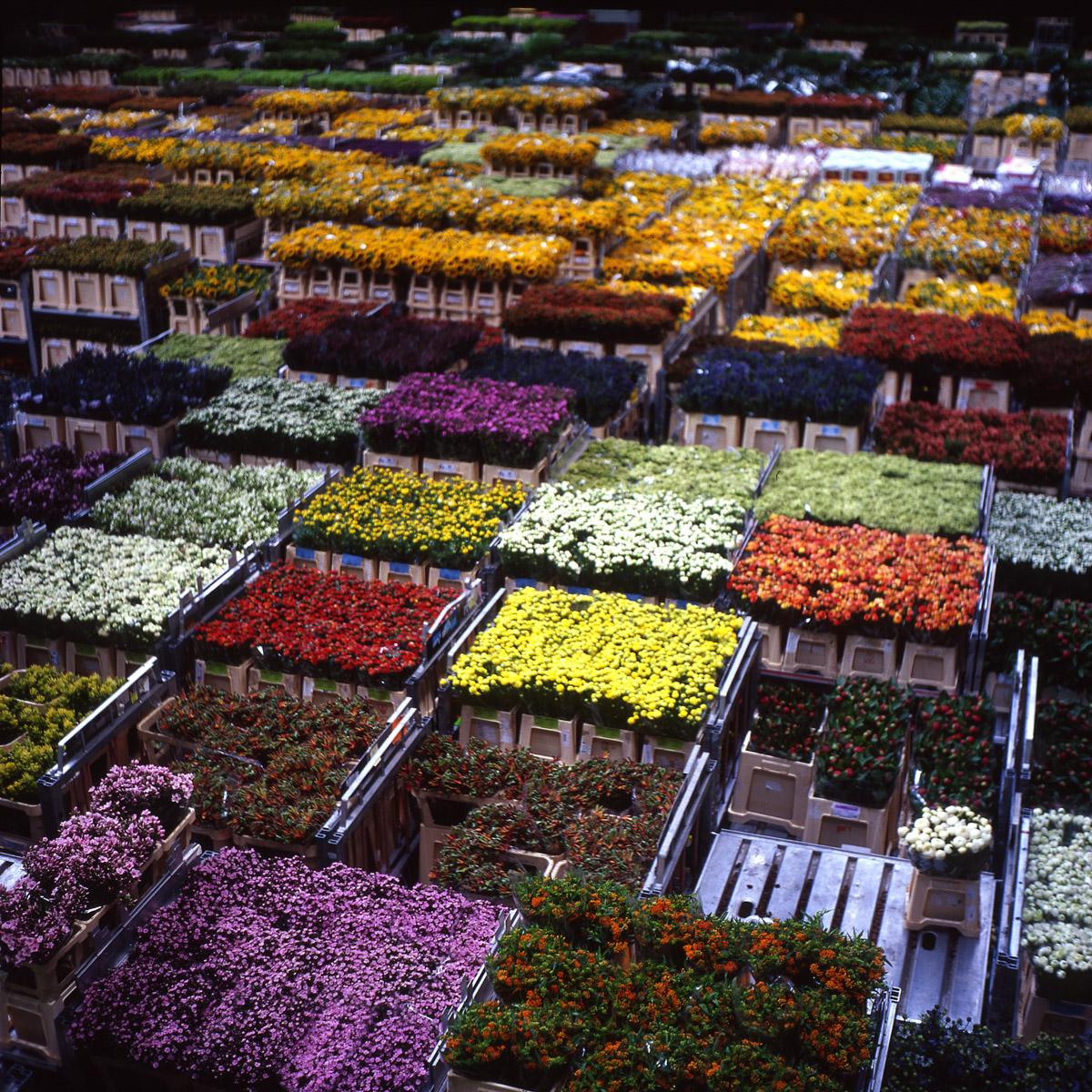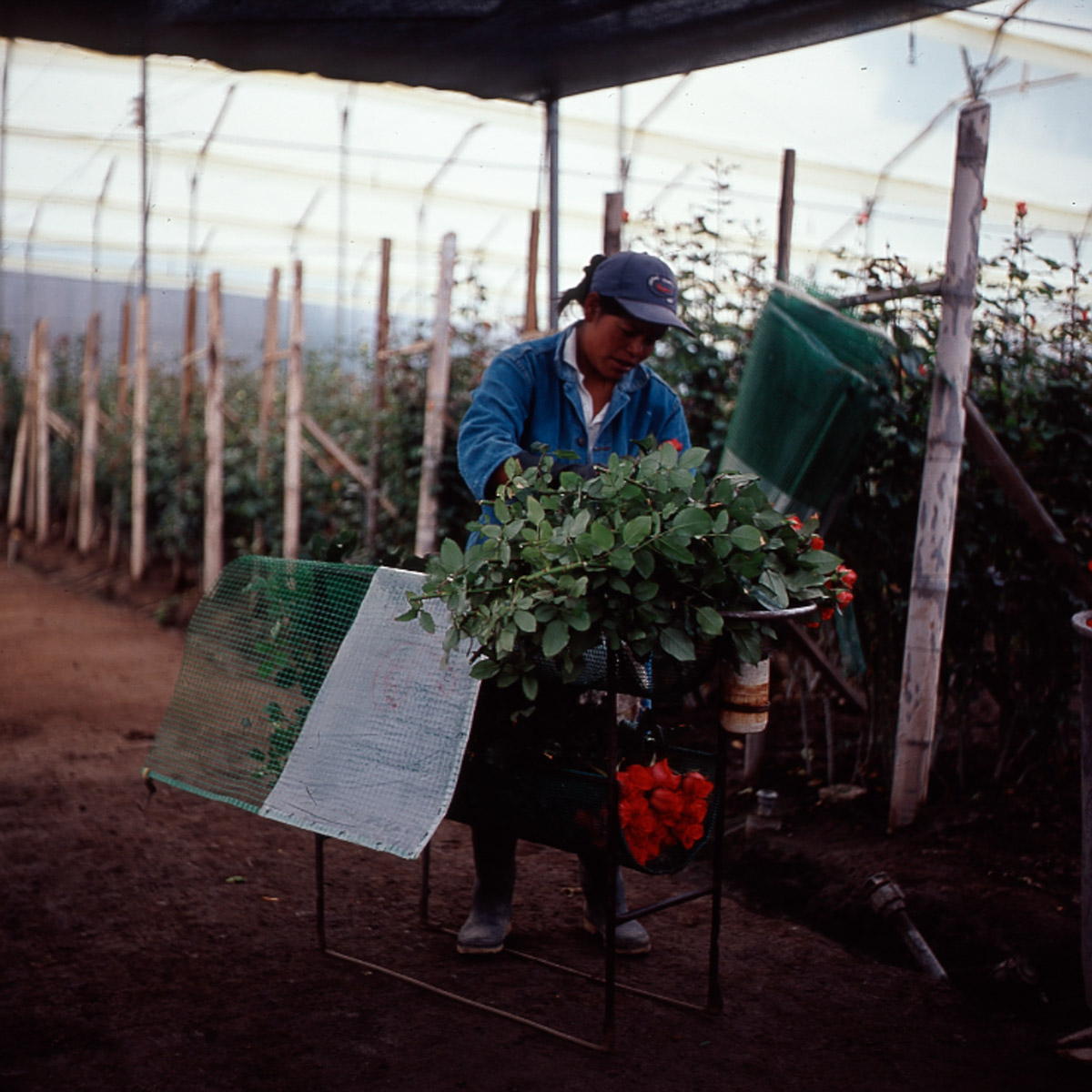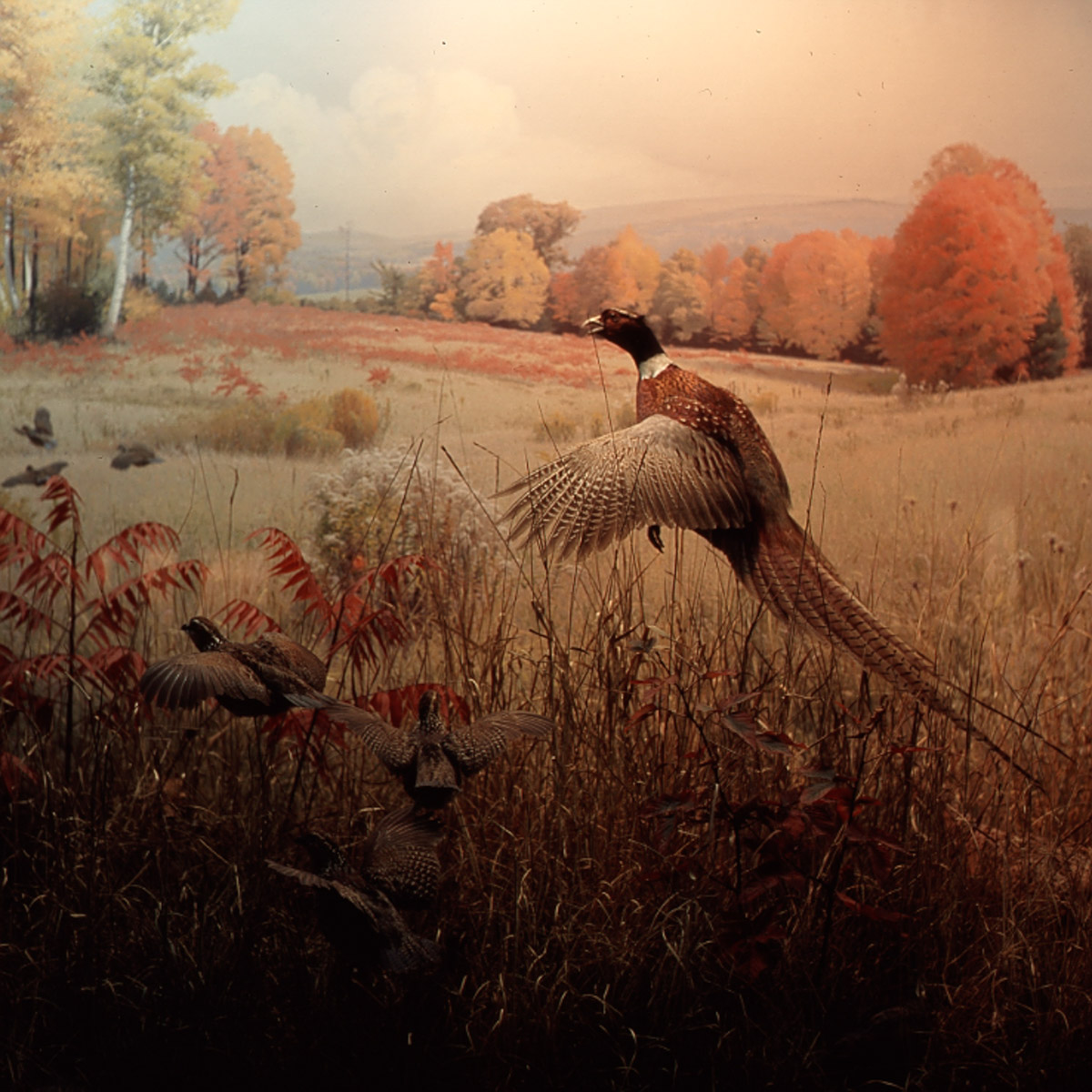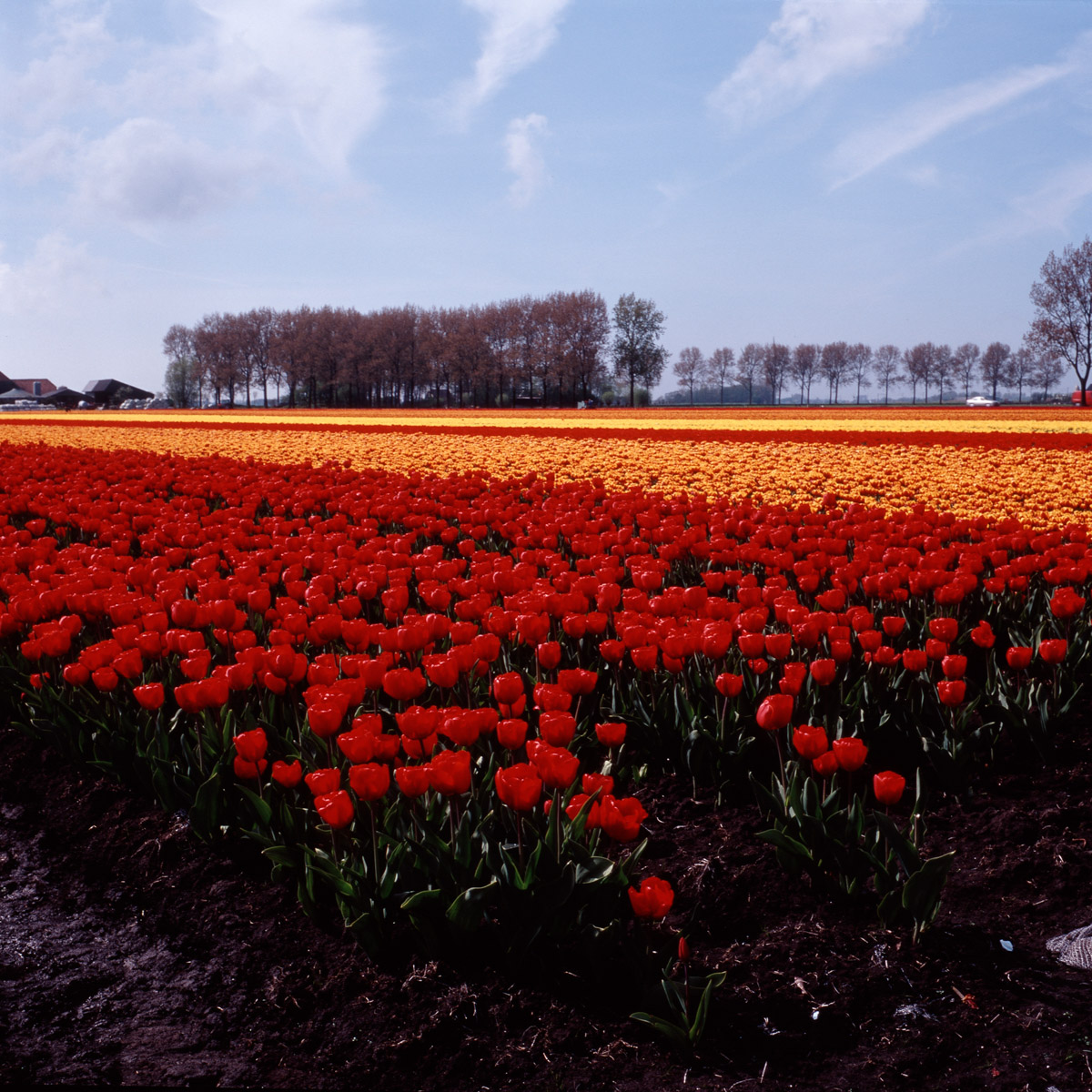2005, Gateshead, UK
Starmaker
Dual medium format slide / audio installation
Installation British Art Show 6, BALTIC Centre for Contemporary Art





The Morisons use cultural shorthand to survey the array of human endeavours and their impact on the natural world. Starmaker (2005), for example, entangles the realms of natural and cultural history and science fiction so that we can appreciate the oddities of both. A medium format slideshow of images - including dioramas in the American Museum of Natural History, rose farming in Ecuador, Dutch tulip fields, container ships and the coastline of the UK - is accompanied by field recordings and electronic sounds sampled from sci-fi movies. The Morison's brief was to create a pictorial survey of Earth as if made by an alien, to consider how the familiar might be understood by an outsider and thereby re-evaluate cultural clichés.
Sally O'Reilly, Heather & Ivan Morison, Frieze, March 2006
'Earthwalker', their recent show at Danielle Arnaud, further extended the binding of the narrative discourses of science fiction to natural history understood as a discursive narrative. Outside, beehives had been converted into architectural towers that resembled minimalist sculptural objects. The titling of these objects, Crystal Worlds, 2006, correlates the internal workings of these once functional devices with JG Ballard's hallucinatory novel, The Crystal World. That this novel haunted Robert Smithson's practice is no coincidence. Smithson is certainly present here. His narrated slideshow, Hotel Palenque, 1969-72, makes an uncanny return in the form of Starmaker, a projected work using medium-format slides and a soundtrack here split over two floors. This work also aligns itself explicitly with science fiction. In part this is through the sounds culled from sci-fi cinema, but is also indicated in its named reference to Olaf Stapledon's novel Star Maker, published in 1937. Stapledon's meditation on creation and complexity perhaps illuminates the images of natural history dioramas, industrial-scale horticulture and the British coastline. Whereas Stapledon's narrator travels out of his body on Earth to become an observer of other worlds, the Morisons present home as if to an alien. Science fiction needs to be recognised as more than a stylistic preference. Literary critic Darko Suvin asserts that science fiction can be usefully thought of as the literature of cognitive estrangement, as opposed to unbridled fantasy or the stock elements of folk tales in which anything is possible. Rather, a different, but believable world with an internal logic, a world that has undergone transformation from our own, makes the possibility of other, especially social and political, transformations possible in the imagination of a reader or viewer. Science fiction retains that critical impulse Theodor Adorno identified in forms of autonomous avant-garde artworks--the possibility that things might be otherwise.
Dan Smith, Unnatural histories: Dan Smith on narrative fictions and the archival impulse in recent art, Art Monthly, March 2007.
Sally O'Reilly, Heather & Ivan Morison, Frieze, March 2006
'Earthwalker', their recent show at Danielle Arnaud, further extended the binding of the narrative discourses of science fiction to natural history understood as a discursive narrative. Outside, beehives had been converted into architectural towers that resembled minimalist sculptural objects. The titling of these objects, Crystal Worlds, 2006, correlates the internal workings of these once functional devices with JG Ballard's hallucinatory novel, The Crystal World. That this novel haunted Robert Smithson's practice is no coincidence. Smithson is certainly present here. His narrated slideshow, Hotel Palenque, 1969-72, makes an uncanny return in the form of Starmaker, a projected work using medium-format slides and a soundtrack here split over two floors. This work also aligns itself explicitly with science fiction. In part this is through the sounds culled from sci-fi cinema, but is also indicated in its named reference to Olaf Stapledon's novel Star Maker, published in 1937. Stapledon's meditation on creation and complexity perhaps illuminates the images of natural history dioramas, industrial-scale horticulture and the British coastline. Whereas Stapledon's narrator travels out of his body on Earth to become an observer of other worlds, the Morisons present home as if to an alien. Science fiction needs to be recognised as more than a stylistic preference. Literary critic Darko Suvin asserts that science fiction can be usefully thought of as the literature of cognitive estrangement, as opposed to unbridled fantasy or the stock elements of folk tales in which anything is possible. Rather, a different, but believable world with an internal logic, a world that has undergone transformation from our own, makes the possibility of other, especially social and political, transformations possible in the imagination of a reader or viewer. Science fiction retains that critical impulse Theodor Adorno identified in forms of autonomous avant-garde artworks--the possibility that things might be otherwise.
Dan Smith, Unnatural histories: Dan Smith on narrative fictions and the archival impulse in recent art, Art Monthly, March 2007.
The image conjured by slide projected travelogues relayed to others in the comfort of a domestic space or home is now synonymous with the cliché and banality of middle class travel and tourism; where the photographic residue of holiday experiences are regurgitated to a bored audience of friends and family. This cultural tradition is one that also attests to the glitch in photography's promise, for the image only infrequently captures the experience of the moment and more often strips the event of any meaningful content or action. Arguably the photographic record or memento of travel can only ever be a pale echo of the experiential encounter with a place, for its documentary value might serve only as an aide memoir for those who participated in the actual journey itself. Here any transferable meaning is rendered void by the chasm of experience between that which has been authentically felt or seen and how this then translates as an anecdote or narrative that can be offered up to others.
The slide projection of travel images in a domestic context perhaps also draws on an historical tradition in which the gesture is seen as one of exclusivity, where tales of exotic places serve to assert a cultural (an often economic) separation or hierarchy between the presenting host and their invited guests. It operates as a signal that affirms the privileged status of a few individuals' experiences above the more pedestrian realities of others. The act of travel however has become subject to a process of both democratisation and standardisation, for in popular terms travel is now less about discovery and instead seems motivated by the compulsion of aimless repetition; the inane following of tried and tested paths. The photographic residue of travel perhaps then offers a form of dual dissatisfaction for it not only fails to capture the experiential moment, but also invariably reiterates images that have already been collectively processed and approved by innumerable guidebooks and tourist boards.
Heather and Ivan Morison frequently make use of a slide projection to relay or reiterate the fragments and residue of their travels and expeditions. Their journeys however are not determined by the familiar routes of tourism; but often follow or borrow highly personal and idiosyncratic itineraries or instructions from more unexpected sources. In Chinese Arboretum, for example they follow the guidance of tree fanatics as they search for rare species or in more recent work it is the route of migrating storks that presents a path for them to trace. Though their recent exhibition Earthwalker is indeed presented in the domestic space of the Danielle Arnaud gallery, the resulting slide projections might be seen as an attempt to subvert or sabotage the conventions of popular travel and its subsequent reportage, which have robbed the gesture of wandering of any critical or transformative function.
Earthwalker [Starmaker] is a collection of fragments and traces in which photographic evidence from previous expeditions and projects appear to collide with an altogether more illusionary register. Echoing the preoccupations of the Victorian explorer or collector, the Morison's records reflect a natural world where the boundaries between the fictitious and factual are blurred, and where strange hybrids and fantasy formations are the products of both imaginary and economic desires. The medium format slides are presented as a disjointed, dislocated sequence that fails to communicate any fixed or stable idea of narrative trajectory or place, but seems instead to create spaces or gaps through which to reflect upon certain recurrent themes and preoccupations. References to collection and storage; taxonomy and organisation; genetic modification and chimera play out over an eerily futuristic soundtrack whose insistent electronic pulse seeps beyond the gallery space and functions to both underscore and disrupt the coherence of the work.
Rather than trying to present a substitute for the performative experience of their travels, the documentary image in Heather and Ivan Morison's work offers both extraordinary (and at times equally prosaic) clues through which an audience must draw their individual conclusions or account of the absent narrative. Their slide-projected photographs present only partial references that are separated or disrupted in projection by pauses, gaps and blank spaces, and in which stirs the promise of both possibility and unease. For Rosalind Krauss the spacing of the photographic image itself is described as a form of syntax, which indicates a "break in the simultaneous experience of the real, a rupture that issues into sequence ... a rupture in the continuous fabric of reality"(1). Other theorists such as Michel de Certeau have suggested that the practice of walking can be seen as analogous to the 'speech act' and can also be understood to create a kind of 'spacing' or syntax in relation to how things are encountered. Walking and travel are described as a form of 'enunciation' that carries the possibility of breathing life or of introducing a temporal beat or narrative into the abstract spatial grid or dead text of the map. Both the photographic image and the pedestrian act can thus be used as means of disruption that ruptures the way in which things are habitually seen and presents a more contingent and revelatory notion of space. Both work towards producing a form of anti-guide through which to encounter the everyday, where the normative methods of viewing or experiencing the world are bypassed in favour of more abstract, unknown or imaginative possibilities. Viewed in this light practices such as that of Heather and Ivan Morison can be argued to reclaim both a critical and poetic function for travel and wandering beyond the formulaic and familiar patterns of popular tourism: they reassert a more mythical and transformative role for the traveller's tale in which fantasy and superstition; science fiction and futuristic visions might operate alongside more familiar accounts of the world.
Emma Cocker, Artists Newsletter, December 2006
1. Rosalind Krauss, 'The Photographic conditions of Surrealism', October, 1981, p.31
The slide projection of travel images in a domestic context perhaps also draws on an historical tradition in which the gesture is seen as one of exclusivity, where tales of exotic places serve to assert a cultural (an often economic) separation or hierarchy between the presenting host and their invited guests. It operates as a signal that affirms the privileged status of a few individuals' experiences above the more pedestrian realities of others. The act of travel however has become subject to a process of both democratisation and standardisation, for in popular terms travel is now less about discovery and instead seems motivated by the compulsion of aimless repetition; the inane following of tried and tested paths. The photographic residue of travel perhaps then offers a form of dual dissatisfaction for it not only fails to capture the experiential moment, but also invariably reiterates images that have already been collectively processed and approved by innumerable guidebooks and tourist boards.
Heather and Ivan Morison frequently make use of a slide projection to relay or reiterate the fragments and residue of their travels and expeditions. Their journeys however are not determined by the familiar routes of tourism; but often follow or borrow highly personal and idiosyncratic itineraries or instructions from more unexpected sources. In Chinese Arboretum, for example they follow the guidance of tree fanatics as they search for rare species or in more recent work it is the route of migrating storks that presents a path for them to trace. Though their recent exhibition Earthwalker is indeed presented in the domestic space of the Danielle Arnaud gallery, the resulting slide projections might be seen as an attempt to subvert or sabotage the conventions of popular travel and its subsequent reportage, which have robbed the gesture of wandering of any critical or transformative function.
Earthwalker [Starmaker] is a collection of fragments and traces in which photographic evidence from previous expeditions and projects appear to collide with an altogether more illusionary register. Echoing the preoccupations of the Victorian explorer or collector, the Morison's records reflect a natural world where the boundaries between the fictitious and factual are blurred, and where strange hybrids and fantasy formations are the products of both imaginary and economic desires. The medium format slides are presented as a disjointed, dislocated sequence that fails to communicate any fixed or stable idea of narrative trajectory or place, but seems instead to create spaces or gaps through which to reflect upon certain recurrent themes and preoccupations. References to collection and storage; taxonomy and organisation; genetic modification and chimera play out over an eerily futuristic soundtrack whose insistent electronic pulse seeps beyond the gallery space and functions to both underscore and disrupt the coherence of the work.
Rather than trying to present a substitute for the performative experience of their travels, the documentary image in Heather and Ivan Morison's work offers both extraordinary (and at times equally prosaic) clues through which an audience must draw their individual conclusions or account of the absent narrative. Their slide-projected photographs present only partial references that are separated or disrupted in projection by pauses, gaps and blank spaces, and in which stirs the promise of both possibility and unease. For Rosalind Krauss the spacing of the photographic image itself is described as a form of syntax, which indicates a "break in the simultaneous experience of the real, a rupture that issues into sequence ... a rupture in the continuous fabric of reality"(1). Other theorists such as Michel de Certeau have suggested that the practice of walking can be seen as analogous to the 'speech act' and can also be understood to create a kind of 'spacing' or syntax in relation to how things are encountered. Walking and travel are described as a form of 'enunciation' that carries the possibility of breathing life or of introducing a temporal beat or narrative into the abstract spatial grid or dead text of the map. Both the photographic image and the pedestrian act can thus be used as means of disruption that ruptures the way in which things are habitually seen and presents a more contingent and revelatory notion of space. Both work towards producing a form of anti-guide through which to encounter the everyday, where the normative methods of viewing or experiencing the world are bypassed in favour of more abstract, unknown or imaginative possibilities. Viewed in this light practices such as that of Heather and Ivan Morison can be argued to reclaim both a critical and poetic function for travel and wandering beyond the formulaic and familiar patterns of popular tourism: they reassert a more mythical and transformative role for the traveller's tale in which fantasy and superstition; science fiction and futuristic visions might operate alongside more familiar accounts of the world.
Emma Cocker, Artists Newsletter, December 2006
1. Rosalind Krauss, 'The Photographic conditions of Surrealism', October, 1981, p.31